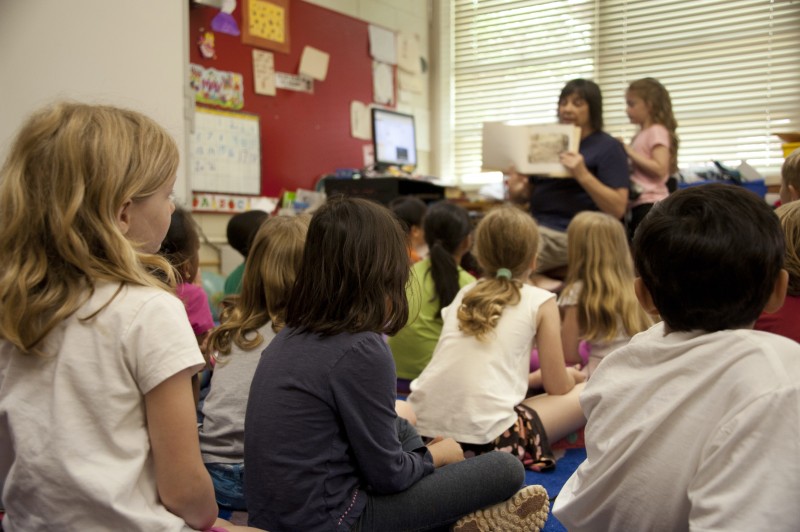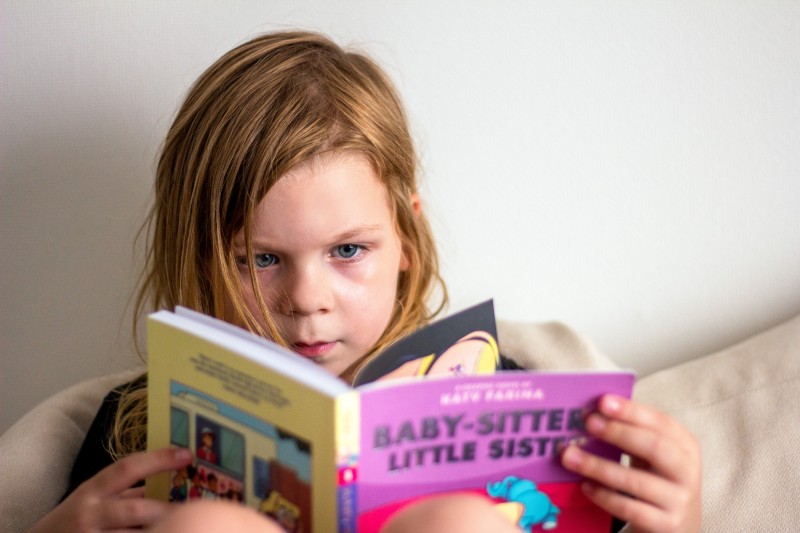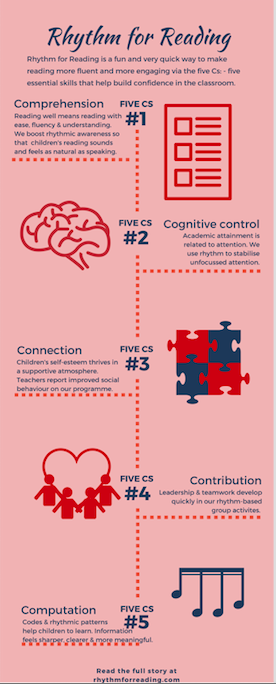The Rhythm for Reading blog
All posts tagged 'rhythm'
Rhythm, breath and well-being
10 October 2022
Breath is an important part of the Rhythm for Reading programme. We use our voices as a team in different ways and this engages our breath. In the early stages of the programme we use rapid fire responses to learn the names of musical notes and our breath is short, sharp and strong - just like the sounds of our voices. Even in the first session of the programme we convert our knowledge of musical notes into fluent reading of musical notation and when we do this our breath changes. Instead of individual utterances, we achieve a flowing coherent stream of note names and our breath flows across the length of the musical phrase for approximately six seconds. This time window of between five and seven seconds is a universal in human cultures. Did you know that the majority of poems are organised rhythmically into meaningful units of between five and seven seconds in duration?
A long slow exhalation is associated with calming the nervous system, even though the energy in the Rhythm for Reading session is playful and the sense of teamwork is energising. The unity between the children and teachers taking part in the programme fosters a sense of belonging which further boosts well-being alongside the calming effect of the long slow exhale.
When I first meet teachers, they often share that they feel anxious about reading musical notation, but one of the most beneficial aspects of taking part, is that our long slow exhale as a group is actually an effective way to sooth anxiety. The smiles at the end of the first musical phrase show a powerful release of emotional tension through the unity of rhythm and breath.
Rhythm, attention and rapid learning
3 October 2022
There are many different forms of attention. Neuroscientists have studied the development of cognitive attention in children as well as the different types of attention that we experience. Boredom and repetition generate a trance-like state of attention, whereas novelty and a switch in the stimulus generate a shift and a rapid reset of attention. The attention span exists to protect us, to feed us and to ensure that our genes succeed us in future generations. This is why the attention span is adaptable and can be trained to become longer or shorter using reinforcements such as rewards or threats. Ultimately, the attention span is involved in predicting when and where the next reward or threat will take place.
If a chid has experienced a threatening situation such as a war zone, they are likely to flinch in response to loud noises and their attention is likely to be highly vigilant, having been trained by the environment to monitor potential threats. A chid raised in a calm and enriched environment is likely to have fostered a natural curiosity for the world around them and to have interacted in reciprocation with it. Conversational turns in such an environment are the rhythmic hallmark of social interactions, and according to researchers contribute to emotional well-being and language development (Zimmerman et al., 2009).
The Rhythm for Reading programme offers an opportunity to move children away from a vigilant state, to a rhythmically responsive form of attention that involves reciprocation and builds receptivity and stamina. The attention system is dynamic and is particularly responsive to setting and emotional set point. If a child was threatened repeatedly at school, for example by a bully, then vigilance in the attention system would affect the child’s learning to some extent.
By the same token, it’s important that Rhythm or Reading sessions take place in the same place, on the same day of the week and at the same time of day to establish the regularity of exposure to rewarding experiences. Knowing where and when positive experiences occur, such as feelings of personal safety, social connection, a boost to well-being, engagement with rewarding patterns and calming breath work, which are nurtured during Rhythm for Reading sessions is important. The anticipation and experience of weekly Rhythm for Reading sessions enables a child’s attention system to recognise the sessions as a ‘real’ part of their environment. A consistent pattern in the children’s lives enables a deeper sense of anticipation and supports rapid learning during the programme.
Zimmerman, E.J., Gilkerson, J.,Richards, J. A., Christakis, D.A. Xu, D., Gray, S., Yapanel., U. (2009) Teaching by listening: The importance of adult-child conversations to language development. Pediatrics, 124 (1), 342-349, doi: 10.1542/peds 2008-2267
Fluent reading is not just our goal, it’s our foundation
20 September 2022
I believe that together, as educators on a mission to make a difference, we must raise standards in reading. The Rhythm for Reading programme offers a mechanism to achieve this. It provides a cumulative and structured approach that supports inclusive teaching and learning.
For instance, there is absolutely no need to break down tasks. We strive to lighten the cognitive load on working memory as an inbuilt feature, and this is why pupils experience the satisfaction of reading musical notation fluently in the very first week.
Although most curriculum subjects encourage progress in speaking or writing or problem-solving, our approach is multi-sensory: we develop children’s rhythmic sensitivity in a range of different ways.
On the one hand, the materials and resources are designed to sustain the fluency of the children’s reading, and on the other hand we adapt the level of challenge by working with the children’s ears, eyes, voices, hands and feet in ever-changing combinations.
The Programme engages working memory with sensitivity. It strengthens cognitive control across the ten weeks by gradually increasing demands on cognitive flexibility week by week. In each weekly session, the pupils build up their repertoire of routines and techniques. Ease is maintained all the while, supporting fluency and control in the execution of all the tasks. Most importantly of all, the primary goal is to support an ethos of inclusivity by maintaining the pupils’ emotional security at all times.Fluency is established at the start and it is maintained right through to the end of the ten weeks. Fluent reading is not just our goal, it’s our foundation.
Reading fluency and comprehension in 2020
9 November 2020
A strong correlation exists between reading fluency and comprehension - one that has fascinated researchers for many decades (Long, 2014). In our current climate, children who read fluently are more likely to cope well with blended learning, self-isolation and other restrictions of the global pandemic on schools.
How can we move more children into the fluent reader category?
Proficient readers automatically use the most appropriate strategy on the fly, whereas fragile readers are more likely to depend on a single strategy and to transition less efficiently from one strategy to another. A fluent reader however, is able to decode an unfamiliar word using phonological skills, as well as orchestrating contextual and syntactic cues to decode whole phrases.
So, there are many processes that are coordinated during fluent reading. Reading comprehension is a cornerstone of these. However, comprehension is not a ‘layer’ of reading that magically ‘appears’ because it has been mechanically underpinned by good levels of decoding and fluency. Comprehension is a product of rhythmic awareness - an important element of language acquisition in infancy.
Though well-intentioned, the practise of timing children’s reading with a stopwatch, encouraging them to read more quickly week after week is not helpful for cultivating rhythmic awareness. Using a stopwatch may generate a degree of motivation to read, but a focus on acceleration forces the child to read without finding their natural rhythm. In fact, if children have learned to decode at a fast pace, they have been trained to enunciate the words without understanding them at all. Comprehension is not related to the pace of reading.
Comprehension and word recognition are coordinated by rhythmic processes during fluent reading that are similar to the natural unfolding of rhythm during speaking and listening. A rhythm-based approach fosters rhythmic awareness and supports fluent reading.
Long, M. (2014). ‘I can read further and there’s more meaning while I read’: An exploratory study investigating the impact of a rhythm-based music intervention on children’s reading. Research Studies in Music Education, 36(1), 107-124.
Rhythm at Home
2 April 2020
‘We’re all in this together’ - To some extent this is true, but I think we’re all having very different experiences of the lockdown. Many people are suffering the agony of losing loved ones to the disease. Many are facing hunger and hardship in the days and weeks ahead. Many feel the anxiety which hangs in the air.
How can rhythm help us? Here are a few suggestions and I’m sending you love and light as you read this.
For frustration and anger: Play music with strong rhythmic patterns and invite some movement from any part of the body willing to respond - perhaps start with a small nod of the head or tap a single finger. A critical voice may speak up. The music is simply our gift to ourselves - no inner commentary is necessary. Stay with the music and allow the patterns to weave their way through the body and mind. When it feels possible, allow the body move a little more until all the physical tension has melted into the music.
For anxiety, panic and grief: Play soothing, gentle, slow music to help ease the breath and the heart rate. Breathe deeply into the stomach to a count of at least six, several times a day is very soothing. Eat small amounts of food, chewing very slowly. Allow the sighs to move through the body like a balm. Comforting hugs from others may not be possible at this time, but I am sending you a hug right now as you read this. Our dreams are always available to us and sometimes we need to create new ones to move forwards again. When the right moment arrives, try drawing or writing about a new life in the future. By sharing our dreams with the page, we allow our hope and faith to grow stronger.
For procrastination: The rhythm of the body in a visualisation can help to overcome procrastination. Visualise doing the task that needs to be done, from getting started to bringing in the physical details of the place in your home where this is happening. Consider the time of day, the feelings of satisfaction and self-worth during the stages of this task. Focus on the joy of finishing; then create the scene for real. Are there any cushions? Is there a cup of tea? Bring everything that is necessary to complete the task. Make a start - simply get started by doing something small. Keep going and focus intently on the joy of finishing. Background music or background voices (perhaps in another language) are helpful for some people. Experiment with the volume to find the level that best supports focus and concentration.
For routines: Setting up a family routine is admirable and will be most successful if everyone is on board. Remember to build breaks into the day and to keep the goals small enough to be achievable. At weekends make sure that the days feel less structured and be sure to celebrate the wins week by week. A star chart is invaluable for creating a growing sense of accomplishment (adults need them too) and will help to pump-up the momentum of each day.
Language: Rhythm in language tells us what people really mean. We are all dealing with different levels of stress at the moment and it can be helpful to be prepared for tricky conversations.
Say this sentence aloud - first very quickly, and then very slowly, ‘Mary cried’.
Vowel sounds (italics) that are uttered quickly, tell us that the person speaking is delivering information, perhaps having already analysed or evaluated a situation. The speaker is coming from a head-centred, judgmental space.
Vowel sounds that are uttered slowly tell us that the person is probably feeling compassion and cares about the situation. This person’s voice signals that they are coming from a heart-centred, loving space.
In tricky conversations, it may be easier to keep the communication flowing if we slow down the vowel sounds. By saying, ‘Oh’ and ‘Ah’ and ‘No,’ very slowly, we can programme ourselves for compassion. This could prove invaluable, should a tricky conversation come along. Take care everyone.
Knowledge, culture and control Part 2
1 March 2020
In this post I’ve blended ideas from several inspiring books, listed below. History, in my view is often cyclical, rather than linear. As we move rapidly into climate crisis, artificial intelligence (AI) and a school curriculum dominated by science, technology, engineering and maths (STEM), I wonder how relevant the curriculum of today will be in five years, given the fast-pace of change.
Since the introduction of the English Baccalaureate, (EBacc) the place of creative disciplines in the school curriculum, which provide an arena for critical debate, rebellion and the development of radical ideas has been devalued, and I wonder, to what end?
Transition from a Pagan to a Christian worldview
During the formation of the Holy Roman Empire, huge cultural shifts came into play. The suppression of the arts in society, regarded as pivotal in the enforcement of Christianity stemmed from the perspective of Saint Augustine. He wrote extensively on music, claiming that rhythm could be classified into four levels from the highest which was spiritually-aligned, down to the lowest level level, that stimulated the flesh.
Monks of the order used physical force against ordinary people who celebrated pagan feasts with music and dancing. Music with a strong beat was strictly banned, as was dancing (Blaukopf, 1992). Intellectuals were persecuted. for example, Hypatia - a mathematics scholar in Alexandria had been lynched in 415 CE for her ‘blasphemous’ study of ancient Greek texts (Rovelli, 2007). By the end of the 5th century, the Great Library at Alexandria had disappeared, and in 529 CE the Platonic academy in Athens was closed by decree of Christian emperor Justinian (Pieper, 2020).The significance of the Great Library was that it housed all of the books in existence, as well as being part of a hub for scholarship, achieved through practices of reason, logic, rhetoric and academic freedom. The achievements of the Greek scholars at Alexandria were impressive. For example, Eratosthenes, in 235 BCE calculated that the world was round, giving its circumference and its diameter; Heron of Alexandria created the world’s first steam engine.
Fanatically, the Christian authorities set to rewriting the knowledge and wisdom of the pervious (pagan) era, notably maintaining that the Earth was flat. Within this context we find Boethius (c.470- c.524 CE), a classically-educated statesman and philosopher, keen to find the middle road between reason and faith. He was executed for treason, shortly after having resolved the schism between the early Christian Church in Rome and Constantinople. Boethius wrote Consolation of Philosophy during his imprisonment, and this text became the foundation of medieval scholasticism (Shiel, 2020).
Appropriation of Greek scholarship
After 500 years of teaching and intellectual activity in cathedral schools and monasteries, early medieval universities were chartered by a Papal Bull. Each university was founded under different circumstances:- at Bologna (1088), Paris (1150) and Oxford (1167), and with differing levels of academic freedom. Highly influential across Western Europe, the liberal arts were taught, although the Christian Church had appropriated ancient Greek curricula for its own purposes, retaining only the structure and main elements of the system (Bernstein, 2000).
Medieval scholasticism, light on rigour and politically-inclined, attempted to reconcile classical reason with traditional early Christian dogma, but with limited success. Students taking the first part of the degree, the trivium, were taught word-related principles: grammar, logic and rhetoric, before taking the second part, the quadrivium which explored the physicality of the world through arithmetic, astronomy, geometry and music.
The trivium of the time had strong religious connotations; similarly, the corresponding quadrivium was adapted to suit the dogma of the day (Bernstein, 2000). For example: music was taught only through the disembodied, polyphonic rhythm (rather than the Greek rhythmos) and in astronomy, students were taught that the Earth was flat (Blaukopf. 1992).
Renaissance and reading
The tension between traditional Augustinian dogma and the classical texts of Boethius eventually gave way in the early Renaissance. Music, dancing and decorative arts, along with academic freedom in scientific thinking had been suppressed for at least a millennium across Western Europe and quickly reappeared.
Music regained its metrical ratio-based system; its integrated rhythmic nature was reinstated and dancing immediately became fashionable. The publication of articles promoting the rise of the importance of the vernacular supported the spread of reading, which soon became widespread, further weakening the authority of traditional Christian dogma.
Transition from post-industrial to digital
There is a linear feel from the Renaissance and Enlightenment years, through to the present day. However, in the contemporary devaluing of arts subjects in the school curriculum with the advent of the English Baccalaureate, we seemingly appear to be cycling back the dark ages with the curbing of academic and creative freedom.
Many young people face a bleak future following poverty in childhood and also having been deprived of an opportunity to develop a creative outlet for self-expression. At the same time, many communities have been impoverished by austerity.
Given that global hubs such as London are the economic areas towards which a disproportionate amount of the world’s digital enterprise, wealth and wealthy have been attracted, the transition to digital has created sharp economic inequalities between the digital hubs and post industrial regional centres, which acutely lack investment and have suffered chronic deprivation.
Positivism
Alongside the glitz of digital, there is a mindset that blindly accepts what appears on the screen with too little criticality. At best, the data-driven positivist perspective on knowledge is no more than instrumental, because its influence is dependent on the empirical tools and the technology of the day. At its worst, positivism commits the grave error of confusing the ends with the means, because it is not contextualised and it is not subject to critical debate (Rovelli, 2007).
The ‘knowledge economy’ promised a fiscal flow generated by the unlimited availability of knowledge via the Internet. The quality of such knowledge is often very poor, as has been shown by its influence on voting behaviour in democratic elections. Unscrutinised, low-grade, data-driven knowledge that supports the spread of technology in relation to health, education, trade and food supply puts society at risk of sub-standard ideas and policy.
Disciplined creativity
The true nature of science is critical, exploratory and visionary (Rovelli, 2007). As such, science is grossly limited if it is reframed through positivism as a mere producer of testable predictions. To protect our societies from positivism, disciplined creativity is essential if breakthroughs and radical thinking are to flourish in the ‘knowledge economy’.
Creative thinking is best nurtured in the domain of the arts subjects, an arena where it is essential to take disciplined risks, to implement ideas and to work through creative issues.
Disproportionate emphasis on STEM
The dominance of STEM subjects in the school curriculum will train our young people to think logically, but in order to solve the substantial problems facing us all in the coming decades, they also need the courage to think creatively, to make cognitive leaps rather than continuing to step slowly in a linear fashion, outpaced by AI.
What is taught in schools today will be out of date by the time pupils start their careers, so the disproportionate emphasis on STEM is seemingly short-sighted. It is only with a greater emphasis on disciplined creativity in the curriculum, that pupils will have the confidence to invent, innovate and implement the solutions, breakthroughs and radical new ideas that are needed for the future.
References
Bernstein, B. 2000 Pedagogy, Symbolic control and Identity: Theory, research, critique, Revised edition, Lanham, MA; Rowman & Littlefield Publishers, Inc,
Blaukopf, C (1992) Musical Life in a Changing Society: Aspects of Musical Sociology, Amadeus Press
Pieper J. (2020) ‘Scholasticism’ in Britannica, https://www.britannica.com/topic/Scholasticism, accessed 29.2.2020, at 10.37
Rovelli, C. (2007) Anaximander, trans. Marion Lignana Rosenberg, Yardley, PA., WestholmePublishing
Shiel, J. (2020) ‘Anicius Manlius Severinus Boethius’ https://www.britannica.com/biography/Anicius-Manlius-Severinus-Boethius accessed 29.2.2020, at 10.57
Rhythm, Breath and Climate Change
19 November 2019
Last year, I went through a major rethink about my approach to the Rhythm for Reading blog. To ‘incubate’ the new outlook I’ve spent a great deal of time exploring new themes and scoping out a broader awareness of rhythm in everyday life.
Deadly wildfires
The shift started unexpectedly twelve months ago. I happened to be working in the San Francisco Bay Area in November, as the State of California braced for the driest month of the year, which typically generates a high fire risk. You may remember the wildfires that blazed out of control at that time. More than 80 people tragically lost their lives in the deadly ‘Camp Fire’ that completely destroyed the town of Paradise. For eight days, the Bay Area lay under a thick blanket of smoke. From my hotel window and when travelling to work I could see that the condors had stopped riding the thermals high in the sky. There was hardly any sunlight, and the air quickly became the filthiest on the planet. Nature seemingly had shutdown, but we humans had stayed calm and carried on regardless. The freeways were absolutely crammed with vehicles, pumping fumes into the already saturated air.
Inequality
Although I was lucky enough to be staying in air-conditioned accommodation during the worst days of pollution, I worked with people who were not so fortunate. They told me about the dreadful effects of the smoke on their young children and elderly neighbours. Given that an hour of exposure to the Camp Fire smog was judged to be the equivalent of chain-smoking ten cigarettes, it was unsurprising that poorer people in the Bay Area, those without air-conditioning living some four hundred miles from the wildfires, were struggling with their breathing, feeling nauseous and even collapsing. This situation made me realise the extent to which I have taken clean air for granted. I have always gratefully acknowledged the work done by trees to reduce carbon dioxide during the night, but naively, I have assumed that this natural recycling process was sustainable. Following the Camp Fire, I no longer presume that forests will continue to maintain the fragile balance of gases that sustain life on our planet.
Toxic air
In California last year, deadly particulate matter from the burning of the forest caused the toxicity in the air. In other words, we were inhaling carbon particles from the very trees that we need in the long term to recycle the air. In the same twelve month period, it has been heart-breaking to see fires started deliberately, that have caused enormous devastation in the Amazon Forest, the ‘Lungs of the Earth’, and tragically, huge areas of New South Wales, Australia are ablaze as I write this.
Rhythm
Like me, you may have been shaken recently into a new awareness of our responsibility for Earth’s atmosphere. Is this the beginning of the end? Historically, seasonal rhythms have driven the cyclical flooding of rivers, as seen in the beautiful hieroglyphs of Ancient Egypt. The predictability of dry seasons and rainy seasons has supported the cultivation of food crops for twelve thousand years. Going back even deeper into pre-history, when an alternating rhythm of warmer and cooler periods caused the ice-sheets of North America and Scandinavia to advance and retreat, hunter-gatherer peoples became highly adaptive and innovative.
According to anthropologist Professor Brian Fagan, Cro-Magnon humans, Neanderthals and many of the larger mammals proved to be temperature tolerant, demonstrating ample capacity to adapt during climactic shifts of the rhythmic, ‘Dansgaard-Oeschger (D/O) oscillation’ (Fagan, 2010, p.55). There was also a remarkable explosion of creativity that followed warmer periods of climate change, marked by magnificent art in the caves of South Africa, Spain, Germany, Austria and France.
Breath
Unlike the hunter-gatherers, who breathed pristine unpolluted air in conditions that were on average considerably cooler than those of today, we inhabit a rapidly warming planet, in which unprotected forests as well as coral reefs are lost every year. The situation that we face is pushing us towards the upper limit of our temperature tolerance. Unfortunately, industrial technologies and economic models have encouraged a false perception of our independence of nature, which has led to widespread abuse of the natural world.
Earth’s indigenous peoples on the other hand, have maintained values and technologies that are closely aligned with nature (Fagan, 2011). Living and breathing in harmony with nature, they have maintained sustainable cultural traditions, that offer a balance between ideals of freedom and security. Now, we must all work together to restore rhythm and balance, to protect and nurture higher values of respect and appreciation for Earth’s resources.
References
Fagan, B. (2010) Cro-Magnon: How the ice-age gave birth to the first modern humans, Bloomsbury Press.
Fagan, B. (2011) The First North Americans: An archeological journey, Thames and Hudson
Rhythm and Reading Comprehension 1/5
29 April 2018
‘To be understood - as to understand’ from the prayer of St Francis captures a profound truth: we are at our happiest when we feel truly understood by others. This feeling of mutual understanding strengthens communities and generates an aura of certainty at the core of each individual’s character. The ability to understand exists in all of us, but can easily be obscured by doubt, worry or fear. Removing worries, doubts and fears leads to clarity –as Johnny Nash put it, “I can see clearly now the rain has gone…”. The same principle applies to reading comprehension. The songlike qualities of speech (i.e. prosody) come to life in children’s voices when they are able to read with ease, fluency and understanding.
In the Simple View of Reading, reading comprehension is described as the ‘product of’ skilled decoding and linguistic comprehension (Gough & Tumner, 1986). The recent focus on oracy (for example Barton, 2018) highlights a focus in some schools on linguistic comprehension. According to researchers, the proportion of children beginning school with speech, language and communication needs is estimated at between 7 and 20 per cent (McKean, 2017) and unfortunately, communication issues carry a risk of low self-esteem and problems with self-confidence (Dockerall et al., 2017).
In the Gough & Tunmer model, the term ‘product of’ seems a little vague. I like to think that ‘product of’ refers to the flexible quality found in skilled reading as well as the dynamic integration of natural language with the alphabetic code. At first, beginning readers struggle to accommodate words and sentences of a variety of shapes and lengths, but as they become more skilled, they ease into a state of flexible, responsive reading, which leads to being able to read sentences whilst processing meaning at the same time. What is even more remarkable about this process is that reading with this wonderful flexibility takes place within distinct time constraints.
The time constraints are a kind of rhythmic signature for language comprehension as well as music and are biologically determined (Long, 2006). Each and every line of a song, poem or musical phrase typically lasts for 3-5 seconds. This brief ‘window’ is our subjective sense of the present moment (Gerstner & Fazio, 1995). In a song, a poem or a musical phrase, this moment is packed with messages and meanings – relating information about feeling, being or doing. The rhythm of reading in any language is very flexible indeed, but it is underpinned by this constant ebb and flow of units of meaning every 3-5 seconds. Becoming aligned with this natural flow of meaning helps children to read words, phrases and sentences with ease, fluency and understanding and also to anticipate words and phrases prior to reading them.
The importance of this rhythmic ebb and flow of meaning cannot be overstated and is a core part of the Rhythm for Reading programme. The programme uses music rather than words to develop rhythmic sensitivity, so it is suitable for children and young people who need a sharp ‘boost’ in reading comprehension, language and communication skills, phonological awareness or cognitive control, whether attending mainstream or special schools.
Barton, G “Teachers should encourage pupils to speak up – and should remember to do so themselves TES News https://www.tes.com/news/teachers-should-encourage-students-speak-and-remember-do-so-themselves Retrieved on 29.4.2018
Dockrell, Julie Elizabeth, et al. “Children with Speech Language and Communication Needs in England: Challenges for Practice.” Frontiers in Education. Vol. 2. Frontiers, 2017.
Gerstner, Geoffrey E., and Victoria A. Fazio. “Evidence of a universal perceptual unit in mammals.” Ethology 101.2 (1995): 89-100.
Gough, Philip B., and William E. Tunmer. “Decoding, reading, and reading disability.” Remedial and special education 7.1 (1986): 6-10.
Long, M. “Stamping, clapping and chanting: An ancient learning pathway?” Educate Journal, 3, 1, (2006) 11-25
McKean, Cristina, et al. “Language Outcomes at 7 Years: Early Predictors and Co-Occurring Difficulties.” Pediatrics(2017): e20161684.
